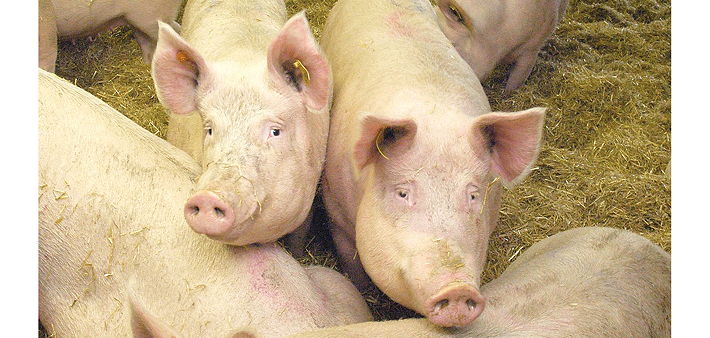BPEX knowledge transfer manager Angela Cliff discusses the worrying trend of increased sow retention that’s emerged during the past 12 months
Producers should avoid the temptation to hang on to sows, despite low cull sow prices. Quite simply, if we’re to maintain a productive herd, we must ensure we maintain the optimum parity profile and not keep sows that should be culled.
The April 15 issue of BPEX’s Market Update said: “UK Sow and boar slaughterings were reportedly 2% back on last February, at 19,100 head. As cull sow prices continue to be poor, increased retention is likely as sow replacement becomes less economically attractive”.
There are some clear reasons to avoid retaining sows that should be culled. First, income from cull sows as a contribution to total unit income is very small. For an average unit, the maximum income from the sows is typically less than 2% of all sales. Your sows are worth more to you sold for less value, than retained in the hope their return will increase in a few months’ time.
For the reason behind this, consider which sows are probably retained. The likelihood is that sows of culling age with a reasonable lifetime performance will be kept for an extra parity. These older sows have an increased risk of pregnancy failure and stillbirths, while the litter has a greater variation in birth weights and higher percentage of smaller piglets. The sow has an increased feed maintenance requirement and possibly a reduced mothering ability due to her mature size.
The next group likely to be retained will probably be sows with consecutive poor litter sizes or numbers weaned, while finally those that have had multiple returns throughout their life, instead of the recommended one return per lifetime after their first parity, will get another chance. These aren’t exactly the building blocks for a high-performing unit!
Replacement rate
So, if you’re to maintain a sow replacement policy, what should your replacement rate be? A unit’s replacement rate will reflect the targeted culling age and level of fertility. To calculate the theoretical annual replacement rate, take the target number of litters per sow (for example, five parities); and unit farrowing index (2.33 litters/year); and calculate the whole herd turnover – that is 5.00 divided by 2.33 = 2.15 years. So the theoretical annual replacement rate will be 100% divided by 2.15 = 46.5% per year.
The higher the farrowing index and the lower the target litters per lifetime, the higher the theoretical replacement rate will be. The actual replacement rate will be a measure of the successful retention of introduced gilts to the target five parities. There will inevitably be both planned and unavoidable losses, and so a reasonable target is to have retained more than 70% of your initial gilt intake to at least parity four, ensuring that the percentage of sows between the most prolific parities, three to five, will be at least 45%.
Ultimately you don’t want your replacement rate to stray too far from the theoretical, but your first priority is to always have enough gilts to maintain the herd’s optimum parity profile of productive sows. Investigating the reasons for the higher replacement rate and possibly early culling of younger sows may identify strategic changes in the gilt management to help improve gilt and sow retention.
Gilts and their litters have their own set of challenges that require targeted management inputs to overcome. These were highlighted at last year’s Banff Pork Seminar:
- every gilt introduced will typically have a reduced litter size for the next two parities compared to multiparous sows;
- piglets from gilt litters are reported to be lighter at birth, which is reflected in their weaning weight and can contribute to a greater variation in the finishing herd;
- the differences in performance of gilt progeny may be due to lower colostrum intake, poor transfer of colostral immunoglobulins and reduced concentration of immunoglobulins in milk; and
- the indirect effects of high replacement rates mean that feed efficiency is reduced as increased proportions of gilt progeny enter the grow to finish groups.
The issue of gilt management and young sow retention is a specialist topic on which BPEX, to be rebranded AHDB Pork this month, will be focusing in the future.




